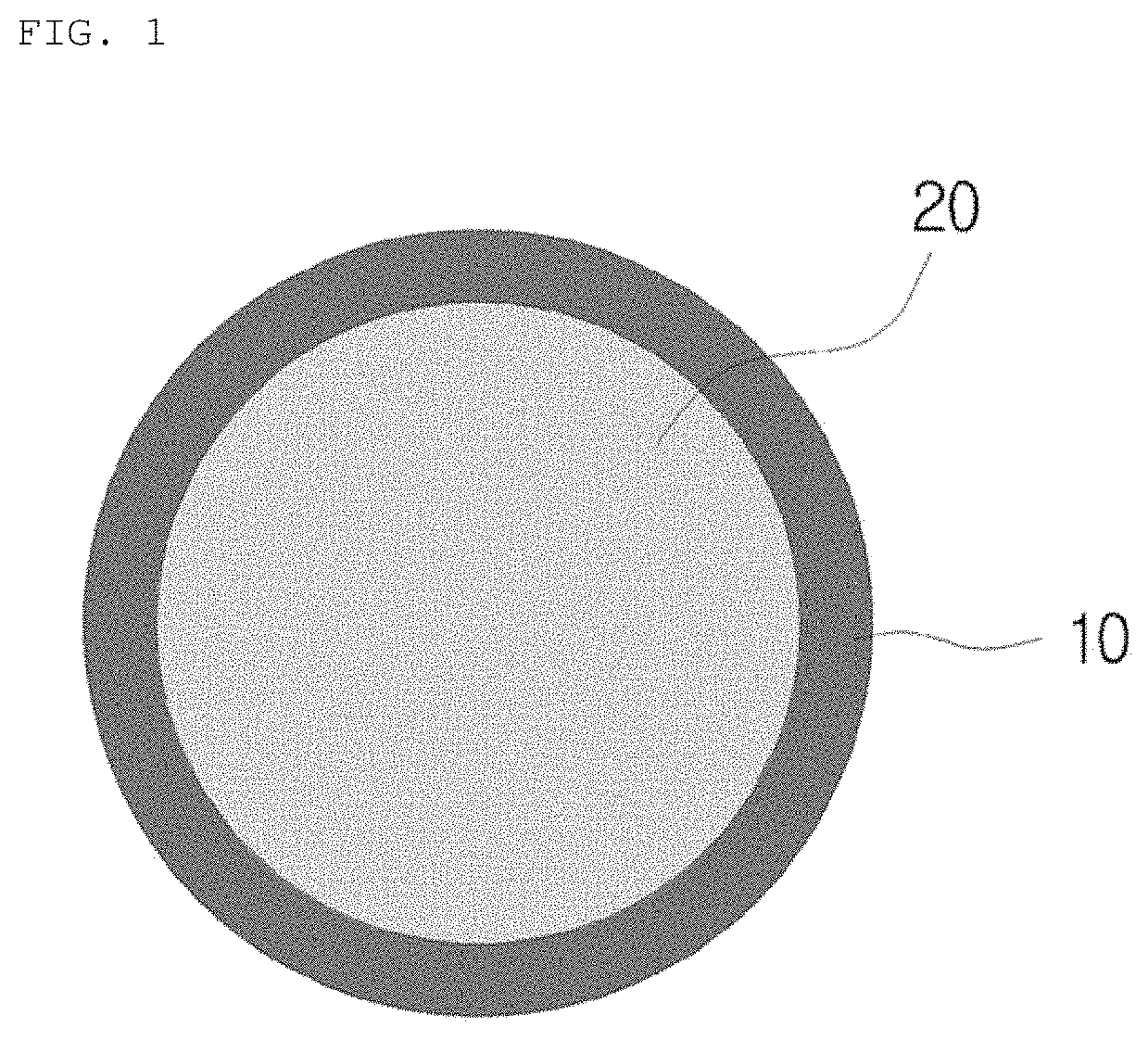Biodegradable capsule with safety due to no irritation to human body and manufacturing method therefor
- Summary
- Abstract
- Description
- Claims
- Application Information
AI Technical Summary
Benefits of technology
Problems solved by technology
Method used
Image
Examples
example 1
[0092]In a 500 ml beaker, 100 g of aroma herb fragrance, 10 g of methyl cellulose, 10 g of hydrolyzed wheat protein, and 2 g of aliphatic polyesterpolyol obtained by esterification dehydration condensation reaction of adipic acid and 1,3-butylene glycol were uniformly mixed, and then 1 g of ready-made isophorone diisocyanate was further mixed, after which an aqueous natural surfactant solution made by mixing 5 g of babasuamidopropyl betaine, a natural surfactant, and 45 g of water was added and stirred for about 20 minutes at a speed of 3,000 rpm using a homomixer, so as to prepare an oil / water emulsion.
[0093]The oil / water emulsion was added into a 1 l four-necked flask, and a small amount of caustic soda was added to adjust the pH to 9-11, after which 0.5 g of aspartic acid was added to adjust a reaction temperature to 40° C. and reacted while stirring for about 3 hours, so as to prepare a biodegradable capsule.
example 2
[0094]In a 500 ml beaker, 100 g of aroma herb fragrance, 10 g of methyl cellulose, 10 g of hydrolyzed oat protein, and 2 g of aliphatic polyesterpolyol obtained by esterification dehydration condensation reaction of adipic acid and pentanediol were uniformly mixed, and then 1 g of ready-made isophorone diisocyanate was further mixed, after which an aqueous natural surfactant solution made by mixing 5 g of babasuamidopropyl betaine, a natural surfactant, and 45 g of water was added and stirred for about 20 minutes at a speed of 3,000 rpm using a homomixer, so as to prepare an oil / water emulsion.
[0095]The oil / water emulsion was added into a 1 l four-necked flask, and a small amount of acetic acid was added to adjust the pH to 3-5, after which 1.5 g of arginine was added to adjust a reaction temperature to 40° C. and reacted while stirring for about 3 hours, so as to prepare a biodegradable capsule.
example 3
[0096]In a 500 ml beaker, 100 g of aroma herb fragrance, 10 g of methyl cellulose, 10 g of laurdimonium hydroxypropyl hydrolyzed wheat protein, and 2 g of aliphatic polyesterpolyol obtained by esterification dehydration condensation reaction of adipic acid and sorbitol were uniformly mixed, and then 1 g of ready-made isophorone diisocyanate was further mixed, after which an aqueous natural surfactant solution made by mixing 5 g of babasuamidopropyl betaine, a natural surfactant, and 45 g of water was added and stirred for about 20 minutes at a speed of 3,000 rpm using a homomixer, so as to prepare an oil / water emulsion.
[0097]The oil / water emulsion was added into a 1 l four-necked flask, and a small amount of acetic acid was added to adjust the pH to 3-5, after which 1.5 g of glutamine was added to adjust a reaction temperature to 40° C. and reacted while stirring for about 3 hours, so as to prepare a biodegradable capsule.
PUM
| Property | Measurement | Unit |
|---|---|---|
| Temperature | aaaaa | aaaaa |
| Percent by mass | aaaaa | aaaaa |
| Percent by mass | aaaaa | aaaaa |
Abstract
Description
Claims
Application Information
 Login to View More
Login to View More - R&D
- Intellectual Property
- Life Sciences
- Materials
- Tech Scout
- Unparalleled Data Quality
- Higher Quality Content
- 60% Fewer Hallucinations
Browse by: Latest US Patents, China's latest patents, Technical Efficacy Thesaurus, Application Domain, Technology Topic, Popular Technical Reports.
© 2025 PatSnap. All rights reserved.Legal|Privacy policy|Modern Slavery Act Transparency Statement|Sitemap|About US| Contact US: help@patsnap.com

